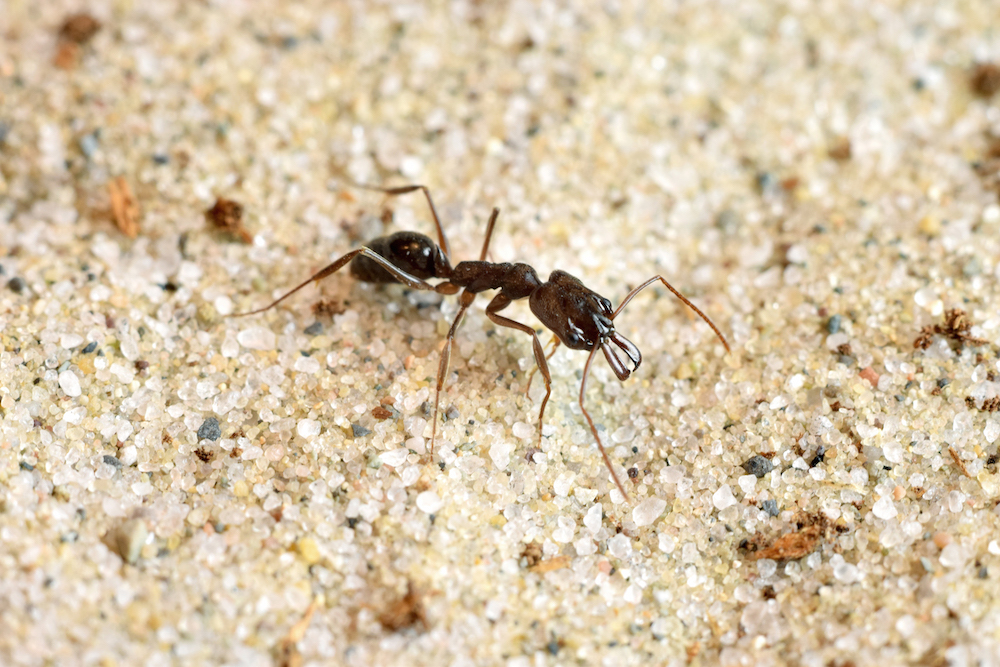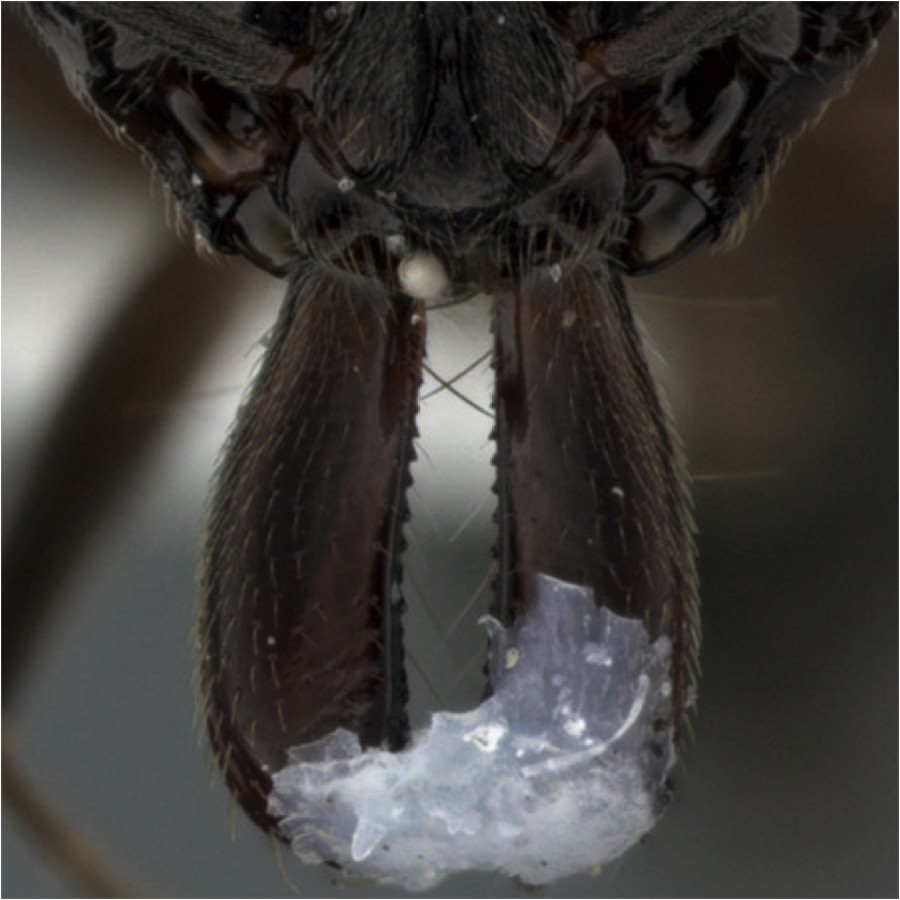Spring-Loaded Jaws Help Ants Escape from Death Pits

When threatened, some trap-jaw ants can use their powerful jaws like a spring to fling themselves out of death pits dug by stealthy predators, a new study finds.
The ant's acrobatic, springlike feat doubles the insect's survival rate when facing a deadly predator called the antlion, an insect that digs pits in the ground to help it catch and eat prey, the researchers said.
The finding suggests that although trap-jaw ants (Odontomachus Brunneus) likely developed their mighty jaws to hunt and crush prey, their use as a getaway trait is a "charismatic example of evolutionary co-option, where a trait that evolved for one function (predation) has been co-opted for another (defense)," the researches wrote in the study. [See Amazing Photos of Ants of the World]
O. Brunneus is famous for its strapping jaws, which it also uses to protect itself by snapping its jaws against predators to bounce them away, as well as for everyday tasks, such as digging nests and caring for ant larvae. In fact, some species of trap-jaw ants can snap their jaws shut at speeds faster than 196.9 feet per second (60 meters per second), making it one of the fastest animal movements ever recorded, the researchers said.
Other studies have reported that trap-jaw ants use their jaws to jump, but it wasn't clear whether this trick helped the insects escape from predators and, if so, whether it improved their chances of survival, said the study's lead researcher, Fredrick Larabee, a doctoral candidate of entomology at the University of Illinois at Urbana-Champaign. [Watch the Trap-Jaw Ant Fling from Death Pit (Video)]
To investigate, Larabee and his colleagues collected trap-jaw ants and a number of pit-building antlions found next to Archbold Biological Station, a lab about two hours south of Disney World in Florida. Antlions often prey on trap-jaw ants, and catch them by digging pits and laying in wait at the bottom.

When small arthropods, such as ants and other insects, fall into a pit, the unstable walls make it hard for the prey to escape. Antlions also throw sand at their potential victims, which can trigger an avalanche and make it even more difficult for the prey to flee. Once the animal falls to the bottom of the pit, the antlion grabs it, pulls it under the sand and injects it with a toxin.
Sign up for the Live Science daily newsletter now
Get the world’s most fascinating discoveries delivered straight to your inbox.
During the experiment, the researchers let antlions build pits in cups filled with sand, and then dropped trap-jaw ants into the pits. The researchers recorded 117 trials with high-speed video. They found that 14 percent of the ants escaped by springing out of the pit, 49 percent fled by running away and 37 percent were caught by antlions.
"Once we saw that they can use this to jump out of the pits, we asked the next natural question — does it actually improve their survival?" Larabee told Live Science.
In a creative twist, he glued shut some of the ants' jaws, so that they would not be able to spring away. In a second group, he put glue on their jaws, but didn't glue them shut, meaning the insects could still use their jaws. (The researchers included this group because they had to chill the ants before applying glue, and it's possible this process impaired the ants, Larabee said.) The researchers also had a third group of ants, which didn't have any glue on their jaws.
The jaw snap, the scientists found, is crucial to the ants' survival. Insects with partially glued jaws were about twice as likely to survive, and ants without glue were 4.7 times as likely to make it, compared with ants whose jaws were glued shut, the researchers said.
The glue made it difficult for the partially glued ants to run out of the pit, but it didn't stop them from flinging themselves out of harm's way, the researchers found. The ants with jaws glued shut couldn't snap their jaws, and only about 28 percent of these ants survived by running away.
"I was certainly surprised that taking away their ability to jump decreased their survival," Larabee said. "It's definitely a story about how very complex traits can originally evolve for one thing, in this case prey capture, but then be co-opted for completely different functions."
The findings were published online today (May 13) in the journal PLOS ONE.
Follow Laura Geggel on Twitter @LauraGeggel. Follow Live Science @livescience, Facebook & Google+. Original article on Live Science.

Laura is the archaeology and Life's Little Mysteries editor at Live Science. She also reports on general science, including paleontology. Her work has appeared in The New York Times, Scholastic, Popular Science and Spectrum, a site on autism research. She has won multiple awards from the Society of Professional Journalists and the Washington Newspaper Publishers Association for her reporting at a weekly newspaper near Seattle. Laura holds a bachelor's degree in English literature and psychology from Washington University in St. Louis and a master's degree in science writing from NYU.










